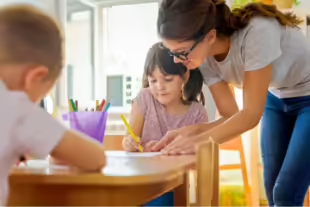Course Curriculum
- 40 sections
- 74 lectures
- 00:00:00 total length
-
Getting Started With the Course
00:00:00
-
Induction Form
00:00:00
-
Registration Entry Form
00:00:00
-
Focus Awards Level 4 Certificate for Higher Level Teaching Assistants (quals)
00:00:00
-
Assignment Preparation Guideline
00:00:00 -
Beginners Guide to Referencing
00:00:00
-
Guideline for the Observation Session
00:00:00
-
1. Purpose of a Higher Level Teaching Assistant
00:00:00 -
2. Role of a Higher Level Teaching Assistant
00:00:00
-
1. Purpose of CPD and How it Affects Practice
00:00:00 -
2. Use of Advice and Feedback to Improve Performance
00:00:00
-
1. Importance of Team Work and Identifying Different Team Roles
00:00:00 -
2. Workplace Collaboration
00:00:00 -
3. Managing and Developing the Effective Practice of Appropriate Team Members
00:00:00
-
HLTA Unit 01
00:00:00 -
HLTA Unit 02
00:00:00 -
HLTA Unit 03
00:00:00 -
HLTA Unit 04
00:00:00 -
HLTA Unit 05
00:00:00 -
HLTA Unit 06
00:00:00 -
HLTA Unit 07
00:00:00
-
1. Stages of Physical, Social and Intellectual Development
00:00:00
-
1.External and Personal Factors that Affect Child Development
00:00:00 -
2.Theories to Support Development
00:00:00 -
3. Types of Changes That Affect a Child’s Development or Wellbeing
00:00:00 -
4. Referral Assessment of Special Educational Needs
00:00:00
-
1. Parents and Carers Contributions for the Development and Well-being of Children and Young People
00:00:00
-
1. Frameworks That Support Development and Well-being of Children
00:00:00
-
1. Legal Entitlement of Children and Young People with Special Educational Needs
00:00:00
-
1. Legislation and Codes of Practice to Promote Equality and Diversity
00:00:00 -
2. Experience and Impact of Prejudice and Discrimination and Applying Principles of Equality, Diversity and Inclusion
00:00:00
-
1. Types of Special Educational Needs and Ways of Supporting Children and Young People with Learning Difficulties
00:00:00
-
1. Effects of a Disability on Children and Young People
00:00:00 -
2. Nature of Sensory or Physical Needs and Roles and Responsibilities of Others and Assistive Technology
00:00:00
-
1. Language and Vocabulary Appropriate to the Age of the Learner, Level of Understanding and Proficiency
00:00:00 -
2. Ways of Introducing Words and Language Structures
00:00:00
-
1. Policies and Procedures to Promote Positive Behaviour
00:00:00 -
2. Importance of Consistency and Fairness When Applying Boundaries and Rules for Behaviour
00:00:00
-
1. Promoting Positive Values, Attitudes and Behaviour
00:00:00 -
2. Ways of Establishing Ground Rules
00:00:00 -
3. Effective Strategies to Promote Positive Values, Attitudes and Behaviour
00:00:00
-
1. Patterns and Triggers of Challenging behaviour and Actions
00:00:00 -
2. Inappropriate and Challenging Behaviour Management
00:00:00 -
3. Supporting Children and Young People to Identify and Avoid Inappropriate Behaviour
00:00:00 -
4. How to Deal with Bullying, Harassment or Oppressive Behaviour
00:00:00
-
1. Contributing to Reviews of Behaviour and Behaviour Policies
00:00:00
-
Observation Report – Unit 4
00:00:00 -
Observation Report – Unit 6
00:00:00 -
Observation Report – Unit 7
00:00:00
-
1. Preparing the Resources Required for Planned Learning Activities
00:00:00 -
2. Developing and Adapting Resources to Meet the Needs of Individuals and Group
00:00:00 -
3. Learning Support Strategies to Meet the Needs of Individuals and Group
00:00:00 -
4. Health, Safety, Security and Access Requirements of the Learning Environment
00:00:00 -
5. Giving Attention to Learners for Balancing the Needs of Individuals and Group
00:00:00 -
6. Assessing Learners’ Participation and Progress in Activities
00:00:00 -
7. How to Provide Feedback Effectively
00:00:00 -
8. Evaluating How Own Knowledge, Understanding and Skills Impact on Practice of Individuals and Group
00:00:00
-
1. Effective Communication with Children and Colleagues
00:00:00 -
2. Communicating Effectively with Parents and Carers
00:00:00 -
3. Commitment to Collaborative and Cooperative Working with Colleagues
00:00:00
-
1. Teaching Strategies
00:00:00 -
2. Designing Opportunities for Learners to Develop Their literacy, Numeracy, ICT and Thinking and Learning Skills
00:00:00 -
3. How Learners’ Prior Knowledge and Attainment Enables Them to Meet Learning Objectives
00:00:00 -
4. Appropriate Language to Suit the Age and Ability of Learners
00:00:00 -
5. Management of Individual, Group and Whole-Class Learning
00:00:00 -
6. Appropriate Teaching to Suit the Stage of the Lesson and the Needs of the Learners
00:00:00
-
1. Opportunities for Using ICT to Support Pupils’ Learning and Its Impact
00:00:00 -
2. Encouraging Pupils to Use ICT to Solve Problems, Work Collaboratively and Find Out New Information
00:00:00
-
1. Providing Constructive Feedback
00:00:00 -
2. Supporting and Guiding Learners
00:00:00 -
3. Using Assessment to Diagnose Learner’s Needs
00:00:00
-
1. Monitoring Learners’ Learning Progress
00:00:00
-
Assignment Submission Checklist
00:00:00
-
Submit Your Assignments
00:00:00








